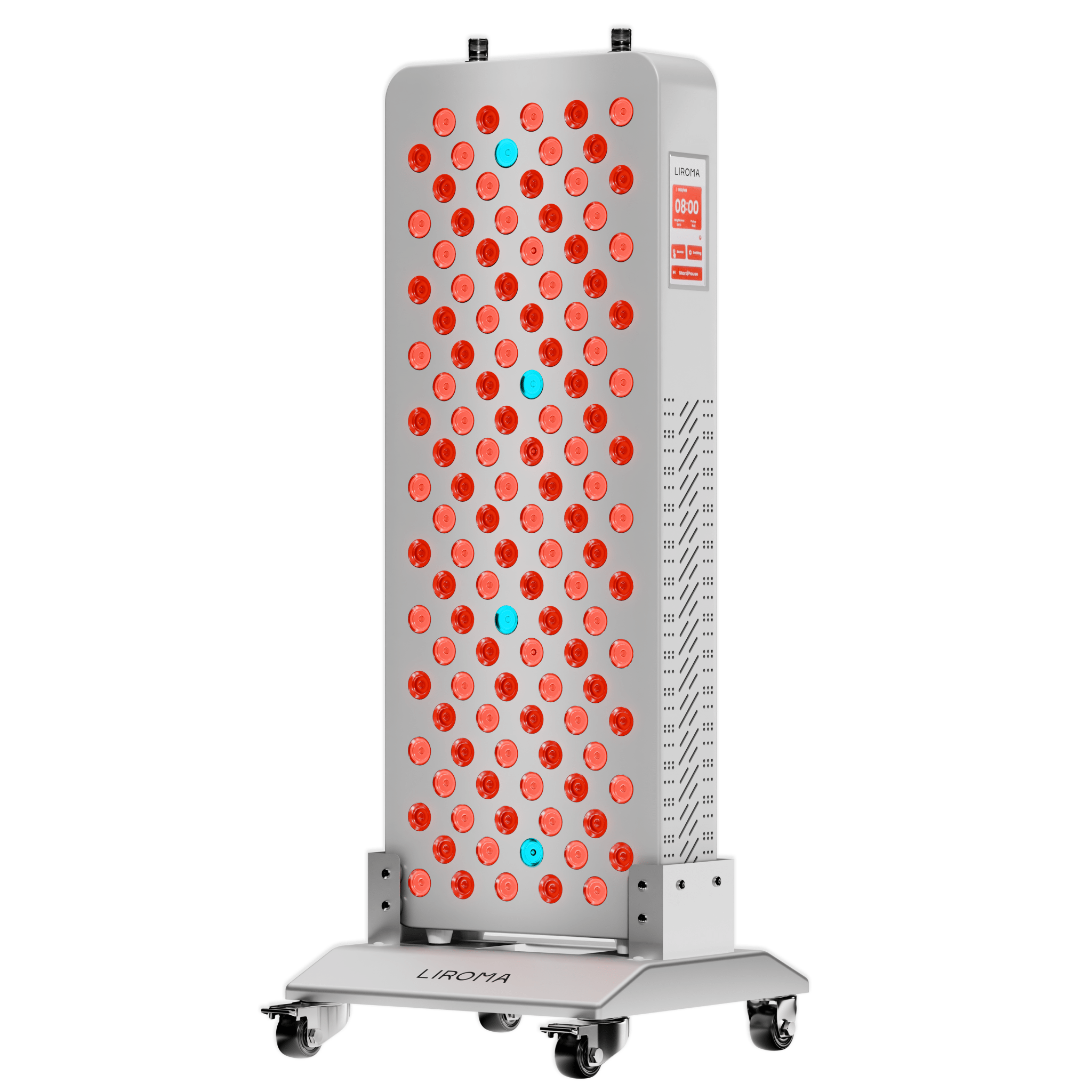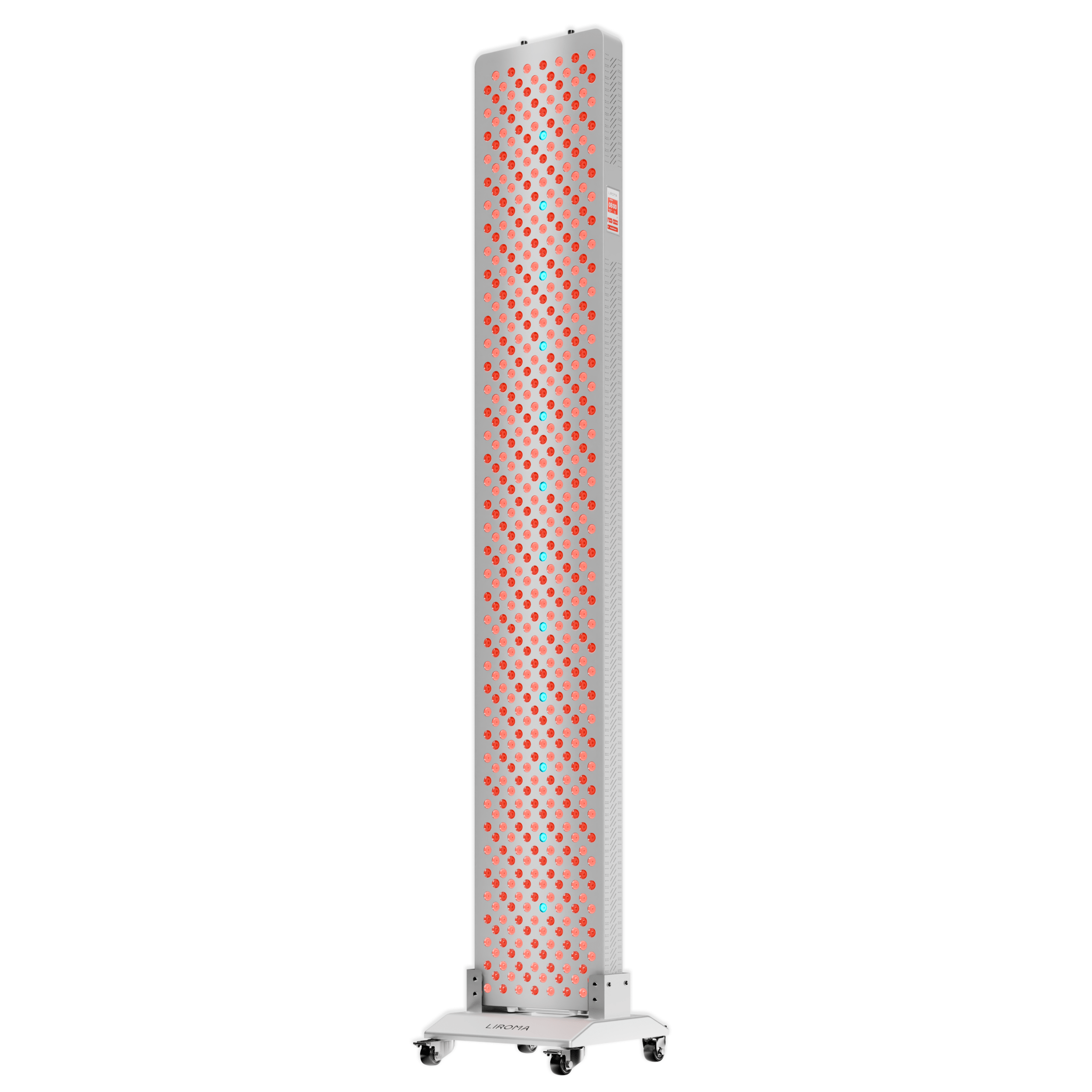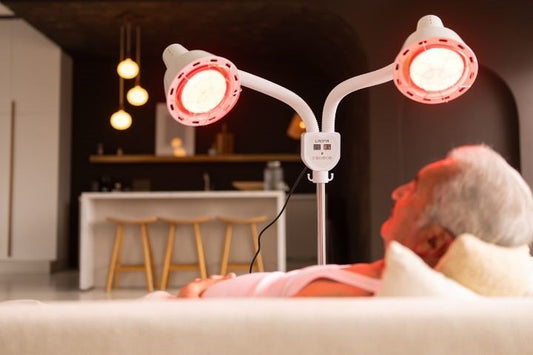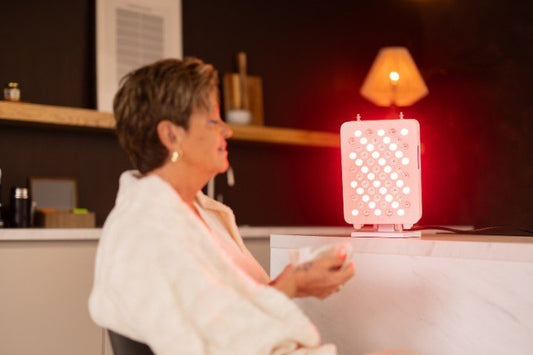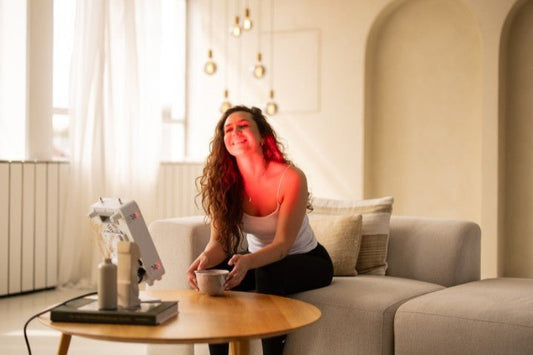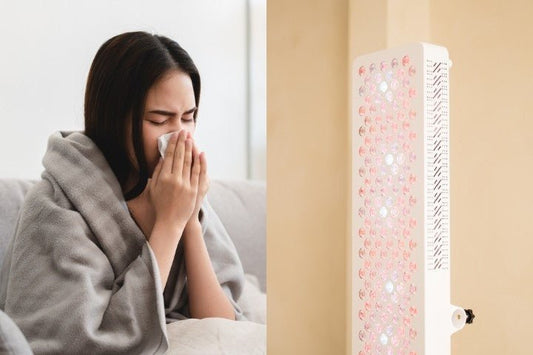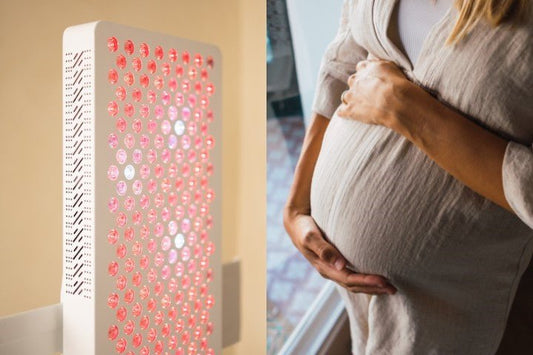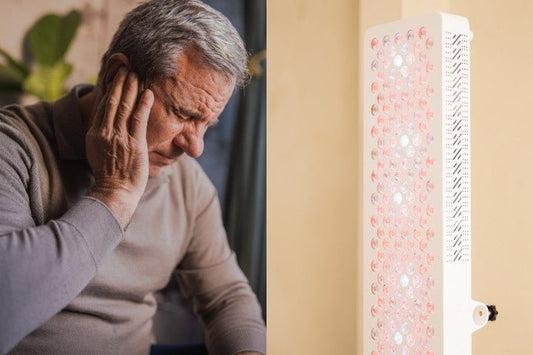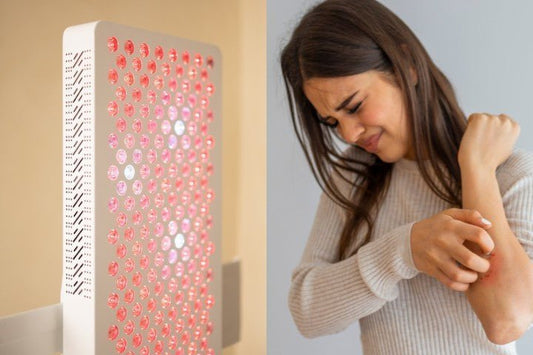Do you suffer from a throbbing, nagging, or throbbing sensation in your ear? Then you know how annoying it can be. Fortunately, there's a natural way to soothe the pain: red light therapy. In this blog post, you'll learn how it works and why your ears can benefit from it.
Please note! The following information is not intended as medical advice. It is compiled based on our own knowledge, customer experiences, and various online sources.
Table of contents
Suffering from earache? Possible causes
When to see a doctor?
Can light therapy help with earache?
Apply light therapy? Instructions for use
Prevent earache: 5 tips!
Conclusion

Suffering from earache? Possible causes
Earache (also called otalgia ) can have several causes. Below is an overview of the most common ones:
1. Infections
- Ear infection (otitis media) is an inflammation of the middle ear, often in children.
- Otitis externa (ear canal inflammation) is also called “swimmer’s ear” and is an inflammation of the external auditory canal.
- Bacterial or viral infections, such as flu, colds, or sore throats, can radiate to the ear.
2. Respiratory problems
- A cold or sinusitis can lead to a blocked Eustachian tube, causing pressure on the ear.
- Allergies can cause swelling and fluid buildup around the ear.
3. Pressure changes
- Flying or changes in altitude can cause earache due to sudden changes in air pressure.
- Diving can lead to barotrauma due to pressure differences underwater.
4. Mechanical causes
- An earwax plug can block the ear and cause pain or deafness.
- Using cotton swabs may irritate or damage the ear canal.
- A foreign body in the ear is a common occurrence mainly in children.
5. Facial and jaw problems
- Temporomandibular joint disorders (TMJ) can cause pain that radiates to the ear.
- Teeth grinding leads to strain on the jaw muscles, which can cause earache.
- Dental problems, such as inflamed molars or wisdom teeth, can also be the cause.
6. Neurological causes
- Nerve pain (neuralgia), such as trigeminal neuralgia, can cause sharp shooting pains near the ear.
- Shingles (herpes zoster oticus) is a viral infection that affects the ear and facial nerves.
7. Other causes
- Trauma to the ear, such as a blow to the ear or head, can cause pain.
- Tumors or cysts are rare, but can cause pressure or pain in the ear.
- Referred pain is pain that originates elsewhere in the body, such as the throat or neck, but is felt in the ear.

When to see a doctor?
Although earaches often resolve on their own, it's important to be alert to signs that require medical attention. Contact your doctor if the pain doesn't subside after a few days or worsens, if you have a fever, if you have fluid or pus coming from your ear, or if you experience (temporary) hearing loss.
It's also wise to seek medical attention if you experience sudden, severe earache, dizziness, or pain associated with a throat or jaw infection. For young children or babies with earaches, it's always advisable to consult a doctor promptly.
Can light therapy help with earache?
Light therapy is increasingly being used as a natural treatment for pain, including earaches. Red light therapy, in particular, can help improve blood circulation, reduce inflammation, and stimulate tissue repair.
This therapy can provide relief for earache. It's a gentle, painless method that combines well with other forms of treatment. However, it's important to always consult a doctor first for severe or persistent symptoms.

What is light therapy?
Sure, you'll want to learn more about light therapy before using it. That's understandable, because it's important to know what your body is experiencing. Red light therapy falls under the category of photobiomodulation , where light influences cells without damaging tissue.
Light therapy is a treatment method in which specific wavelengths of light are directed at the body to support natural healing processes. Depending on the type of light, various effects can be achieved, such as reduced inflammation, stimulated cell growth, or improved mood.
Difference between red light and infrared?
Red light and infrared light are close together in the light spectrum, but they penetrate the skin differently.
- Red light (usually 620–660 nanometers) works primarily on the upper layers of the skin and is widely used for skin repair, wound healing, and inflammation close to the surface.
- Infrared light (usually 800–1000 nanometers) penetrates deeper into the tissue, into muscles and joints, and is therefore more suitable for deeper pain or tension, such as pain in joints and muscles .
What therapy should you use for earache?
For earaches, a combination of red light and near-infrared light is usually recommended. Red light can help with superficial irritation or inflammation of the ear canal, while infrared light penetrates deeper and can reach areas such as the jaw joint, the Eustachian tube, or tense muscles around the ear.
An LED lamp or light panel with a wavelength of around 660 nm (red) and 850 nm (infrared).

Applying light therapy? Instructions for use
Light therapy is simple to apply, but it is important to follow some guidelines for safe and effective treatment.
- Distance: During the session, maintain a distance of approximately 15 to 30 cm between the light device and your skin. Do not aim the light directly at the ear, but at the skin around the ear, jaw, or neck.
- Session duration: A session lasts on average 10 to 20 minutes per time, depending on the intensity of the device.
- Frequency: For best results, it is recommended to apply the therapy 3 to 5 times a week, preferably at fixed times.
- Other things to keep in mind: During the treatment you will often feel a pleasant warmth, but it should never be hot or painful. Wear eye protection if necessary, especially when using the light close to your face. Make sure your hair is dry and avoid drafts or cold air during and after the session, as these can disrupt the effect or worsen symptoms.
Prevent earache: 5 tips!
A little attention can prevent a lot of discomfort. With a few simple habits, you can keep your ears healthy and prevent annoying symptoms. Here are 5 tips:
1. Keep your ears dry
Moisture in the ear canal, for example, after swimming or showering, can cause irritation or inflammation. Dry your ears gently and, if necessary, use earplugs when swimming.
2. Do not use cotton swabs
Cotton swabs often push earwax deeper into the ear, which can cause blockage or damage. Let the ear clean itself or use a specialized ear cleaner if necessary.
3. Protect your ears from cold and wind
Drafts and cold air can cause earaches, especially in sensitive ears. In cold or windy weather, wear a hat or earmuffs.
4. Support your resistance
A strong immune system helps prevent colds, sinus infections, and ear infections. Make sure you get enough sleep, a healthy diet, and plenty of exercise.
5. Be careful with pressure differences
While flying or diving, you may experience earache due to pressure changes. Try swallowing, yawning, or chewing gum to clear your ears. Use earplugs if necessary.
Conclusion
Red light can provide valuable support for certain types of earache, especially for early symptoms or if the cause lies in muscle tension. The heat has a relaxing effect and promotes blood circulation. However, it's always important to seek medical advice for severe or unclear pain.


